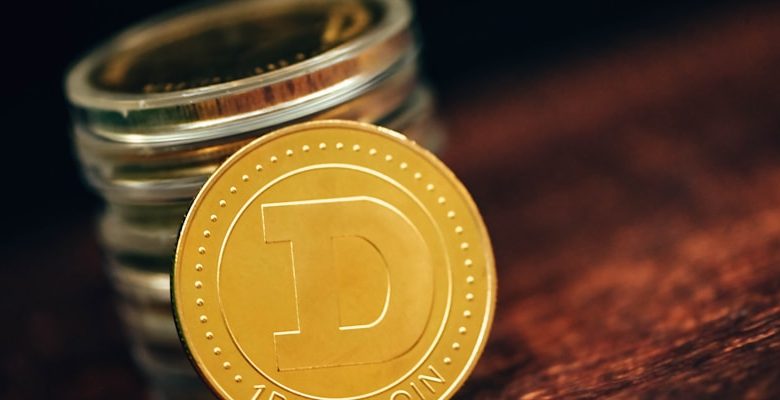How Stablecoins Are Integral to the DeFi Movement

- Understanding the role of stablecoins in decentralized finance (DeFi)
- The benefits of using stablecoins in DeFi applications
- Examining the various types of stablecoins in the DeFi ecosystem
- Challenges and opportunities of integrating stablecoins into DeFi platforms
- Regulatory considerations for stablecoins within the DeFi space
- The future of stablecoins and their impact on the DeFi movement
Understanding the role of stablecoins in decentralized finance (DeFi)
Stablecoins play a crucial role in the decentralized finance (DeFi) movement by providing a reliable and stable form of cryptocurrency. These digital assets are pegged to fiat currencies like the US dollar, euro, or yen, ensuring that their value remains constant.
One of the main advantages of stablecoins in DeFi is their ability to mitigate the volatility that is commonly associated with traditional cryptocurrencies like Bitcoin or Ethereum. This stability makes them an attractive option for users looking to hedge against market fluctuations while still participating in decentralized financial activities.
Stablecoins are also essential for facilitating various DeFi applications, such as decentralized exchanges, lending platforms, and yield farming protocols. By using stablecoins as a medium of exchange, users can transact without having to worry about price volatility affecting the value of their assets.
Furthermore, stablecoins enable users to earn interest on their holdings through DeFi lending protocols, where they can lend out their stablecoins to borrowers in exchange for a yield. This functionality has contributed to the growing popularity of DeFi platforms among cryptocurrency enthusiasts and investors.
The benefits of using stablecoins in DeFi applications
Stablecoins play a crucial role in decentralized finance (DeFi) applications by providing a reliable store of value without the volatility associated with traditional cryptocurrencies. These digital assets are pegged to a stable asset like the US dollar, ensuring stability in price and value. By using stablecoins in DeFi protocols, users can benefit from various advantages:
- Reduced Risk: Stablecoins help mitigate the risk of price fluctuations that are common in the crypto market, providing a more secure environment for users to transact and invest.
- Efficiency: Transactions with stablecoins are faster and cheaper compared to traditional banking systems, enabling seamless transfers of value across different DeFi platforms.
- Global Accessibility: Stablecoins are accessible to anyone with an internet connection, making it easier for individuals worldwide to participate in DeFi applications and access financial services.
- Transparency: The use of stablecoins in DeFi ensures transparency and immutability of transactions on the blockchain, allowing users to track their funds and verify the integrity of the system.
- Interoperability: Stablecoins can be integrated into various DeFi protocols, enabling cross-platform compatibility and facilitating the seamless flow of assets between different decentralized applications.
Overall, stablecoins are an integral part of the DeFi movement, providing a stable and reliable foundation for the future of decentralized finance. As the DeFi ecosystem continues to grow, the importance of stablecoins in enabling efficient and secure financial transactions will only become more pronounced.
Examining the various types of stablecoins in the DeFi ecosystem
Stablecoins play a crucial role in the decentralized finance (DeFi) ecosystem by providing a reliable store of value for users. There are several types of stablecoins that have emerged to cater to different needs within the DeFi space. These stablecoins can be categorized into three main types: fiat-collateralized, crypto-collateralized, and algorithmic stablecoins.
Fiat-collateralized stablecoins are pegged to a fiat currency, such as the US Dollar or Euro, and are backed by reserves of the corresponding currency. Examples of popular fiat-collateralized stablecoins include USDC, Tether (USDT), and TrueUSD. These stablecoins provide users with stability and predictability in value, making them ideal for trading and lending activities in DeFi protocols.
Crypto-collateralized stablecoins are backed by a reserve of other cryptocurrencies, such as Ether or Bitcoin. These stablecoins rely on over-collateralization to maintain their peg to a fiat currency. DAI, a stablecoin issued on the Ethereum blockchain, is a prominent example of a crypto-collateralized stablecoin. Users can lock up their crypto assets as collateral to mint DAI, which can then be used in various DeFi applications.
Algorithmic stablecoins, on the other hand, do not rely on any collateral to maintain their peg. Instead, these stablecoins use algorithmic mechanisms to adjust the supply based on market demand. One example of an algorithmic stablecoin is Ampleforth (AMPL), which automatically adjusts its token supply based on price fluctuations to stabilize its value. Algorithmic stablecoins offer a unique approach to maintaining stability without the need for collateral reserves.
In conclusion, the various types of stablecoins in the DeFi ecosystem cater to different user preferences and risk appetites. Whether it’s fiat-collateralized, crypto-collateralized, or algorithmic stablecoins, each type offers a unique set of advantages and trade-offs. Understanding the differences between these stablecoins is crucial for users looking to participate in DeFi activities and leverage the benefits of stable value within the ecosystem.
Challenges and opportunities of integrating stablecoins into DeFi platforms
Integrating stablecoins into DeFi platforms presents both challenges and opportunities for the decentralized finance ecosystem. One of the main challenges is ensuring the stability of the stablecoins themselves, as any fluctuations in their value can have a significant impact on the DeFi protocols they are integrated with. This necessitates the need for robust governance mechanisms and risk management strategies to mitigate potential risks.
On the other hand, the integration of stablecoins into DeFi platforms also opens up a world of opportunities. Stablecoins provide a reliable store of value and medium of exchange within the DeFi ecosystem, enabling users to transact with minimal friction and volatility. This can help drive adoption of DeFi platforms and attract more mainstream users who are hesitant to engage with traditional cryptocurrencies due to their price volatility.
Furthermore, stablecoins can act as a bridge between traditional finance and DeFi, facilitating the seamless transfer of assets between the two worlds. This can help unlock new liquidity pools and expand the range of financial products and services available within the DeFi space. By leveraging stablecoins, DeFi platforms can tap into a larger market of users who are looking for stable and secure ways to interact with decentralized finance.
Regulatory considerations for stablecoins within the DeFi space
Regulatory considerations play a crucial role in the integration of stablecoins within the decentralized finance (DeFi) space. As stablecoins continue to gain traction in the DeFi ecosystem, it is essential to address the potential regulatory challenges that may arise.
One of the primary concerns is the classification of stablecoins under existing regulatory frameworks. Regulators are tasked with determining whether stablecoins should be considered as securities, commodities, or currencies. This classification will have significant implications for how stablecoins are treated within the DeFi space.
Another important consideration is the compliance requirements associated with stablecoins. As DeFi platforms utilizing stablecoins grow in popularity, regulators are focusing more on ensuring that these platforms adhere to anti-money laundering (AML) and know your customer (KYC) regulations. Failure to comply with these regulations could result in severe penalties for DeFi projects.
Furthermore, the potential for stablecoins to impact financial stability is a key concern for regulators. The rapid growth of stablecoins within the DeFi space could pose systemic risks to the traditional financial system. Regulators are closely monitoring this trend and may introduce new regulations to mitigate any potential risks.
Overall, navigating the regulatory landscape is essential for the sustainable growth of stablecoins within the DeFi space. By addressing regulatory considerations proactively, DeFi projects can build trust with regulators and ensure the long-term viability of stablecoins in the decentralized financial ecosystem.
The future of stablecoins and their impact on the DeFi movement
Stablecoins are expected to play a crucial role in the future of the DeFi movement. As the demand for decentralized finance continues to grow, stablecoins provide a reliable bridge between the traditional financial world and the decentralized ecosystem. Their stability and pegged value to a fiat currency make them a popular choice for users looking to minimize volatility while still enjoying the benefits of blockchain technology.
One of the key impacts of stablecoins on the DeFi movement is their ability to facilitate seamless transactions and liquidity provision within decentralized platforms. Users can easily move value across different protocols without having to deal with the delays and high fees associated with traditional banking systems. This efficiency has the potential to unlock new possibilities for DeFi applications and attract a wider audience to the ecosystem.
Furthermore, stablecoins serve as a reliable store of value within the DeFi space, allowing users to hedge against market volatility and preserve their wealth. This stability is essential for attracting institutional investors who may be wary of the unpredictable nature of cryptocurrencies. By incorporating stablecoins into their portfolios, these investors can participate in DeFi activities with greater confidence and security.
In conclusion, the future of stablecoins is closely intertwined with the growth and development of the DeFi movement. As these digital assets continue to gain prominence in the crypto space, their impact on decentralized finance is expected to be profound. By providing stability, efficiency, and a reliable store of value, stablecoins are poised to drive the widespread adoption of DeFi and revolutionize the way we think about traditional finance.



